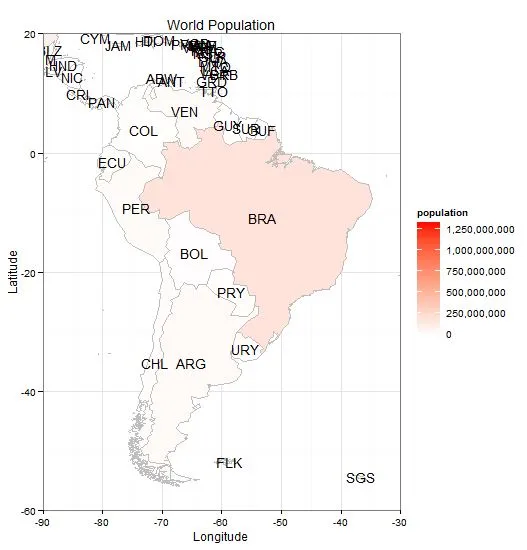我正在尝试使用R语言的ggplot给我的多边形打标签。我在stackoverflow上找到一个非常接近我想要的帖子,只是它是关于点的。
我在网上找到了一些方法。现在首先需要找到每个形状的中心位置,然后将这些位置和名称放在一起。然后将其与geom_text()中的标签函数链接起来。
由于我已经尝试了很长时间,所以我决定提出问题,希望这里有人可以给我最终推动我所需的事情。我的绘图函数:
region_of_interest.fort <- fortify(region_of_interest, region = "score")
region_of_interest.fort$id <- as.numeric(region_of_interest.fort$id)
region_of_interest.fort$id <- region_of_interest.fort$id
region_of_interest.fort1 <- fortify(region_of_interest, region = "GM_NAAM")
region_of_interest.fort1$id <- as.character(region_of_interest.fort1$id)
region_of_interest.fort1$id <- region_of_interest.fort1$id
idList <- unique(region_of_interest.fort1$id)
centroids.df <- as.data.frame(coordinates(region_of_interest))
names(centroids.df) <- c("Longitude", "Latitude")
randomMap.df <- data.frame(id = idList, shading = runif(length(idList)), centroids.df)
ggplot(data = region_of_interest.fort, aes(x = long, y = lat, fill = id, group = group)) +
geom_polygon() +
geom_text(centroids.df, aes(label = id, x = Longitude, y = Latitude)) +
scale_fill_gradient(high = "green", low = "red", guide = "colorbar") +
coord_equal() +
theme() +
ggtitle("Title")
我在使用ggplot2时遇到了错误:ggplot2不知道如何处理类别为uneval的数据。
我的数据
region_of_interest$GM_NAAM
[1] Groningen Haren Ooststellingwerf Assen Aa en Hunze Borger- Odoorn
[7] Noordenveld Westerveld Tynaarlo Midden-Drenthe
415 Levels: 's-Gravenhage 's-Hertogenbosch Aa en Hunze Aalburg Aalsmeer Aalten ... Zwolle
region_of_interest$score
[1] 10 -2 -1 2 -1 -4 -4 -5 0 0
